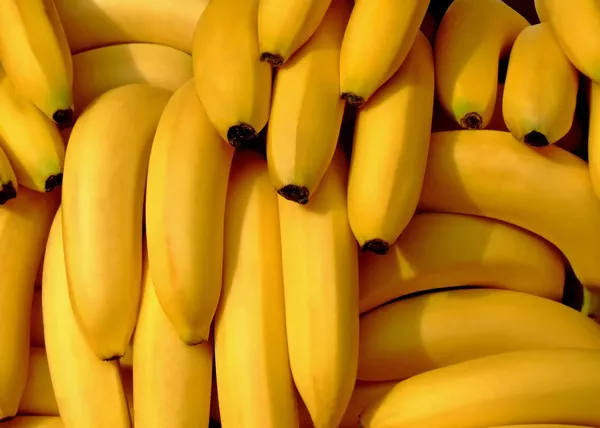Coffee is one of the most beloved beverages globally, consumed by millions daily for its rich flavor and energizing properties. The production of coffee beans is a complex and intensive process, involving countries with ideal climates, vast agricultural lands, and significant investments in coffee farming. In this article, we will explore the top 10 coffee bean-producing countries in the world, analyzing their production volumes, unique characteristics, and the role they play in the global coffee market.
1. Brazil
The Leading Coffee Producer
Brazil has held the title of the largest coffee producer for more than 150 years. This South American giant is responsible for about 37% of the world’s coffee production, yielding approximately 60 million bags of coffee annually. The country grows two main types of coffee: Arabica and Robusta, with Arabica beans being the dominant variety.
Brazil’s coffee-growing regions include Minas Gerais, São Paulo, Espírito Santo, and Bahia. The country’s vast agricultural landscape, favorable climate, and longstanding coffee culture contribute significantly to its global dominance. Coffee farming in Brazil dates back to the early 18th century, and it has become deeply intertwined with the nation’s economy.
2. Vietnam
The Robust Robusta Powerhouse
Vietnam ranks as the second-largest coffee producer globally, contributing around 17% of the world’s coffee supply. Unlike Brazil, which focuses more on Arabica beans, Vietnam specializes in growing Robusta coffee beans. Robusta beans are known for their higher caffeine content and stronger, more bitter flavor compared to Arabica beans.
Vietnam’s coffee production is concentrated in the Central Highlands region, where the combination of altitude and climate provides an ideal environment for Robusta cultivation. The country’s coffee industry has grown rapidly over the past few decades, fueled by both domestic demand and international export.
3. Colombia
The Home of Premium Arabica Coffee
Colombia is one of the most recognized coffee-producing countries worldwide, known for its high-quality Arabica beans. Colombian coffee is highly regarded for its smooth, balanced flavor, which is a result of the country’s perfect growing conditions. The country’s mountainous terrain, combined with consistent rainfall and a temperate climate, allows for optimal coffee production throughout the year.
The coffee-growing regions of Colombia include Antioquia, Huila, Nariño, and Quindío, with the coffee culture deeply embedded in the nation’s history. The Colombian Coffee Growers Federation (FNC) ensures the quality of the coffee produced, contributing to its international reputation. Colombia produces approximately 14 million bags of coffee annually.
4. Indonesia
The Spice Islands of Coffee
Indonesia is known for its unique coffee, which is often distinguished by its earthy, spicy flavors and full-bodied profile. The country’s coffee production primarily focuses on Arabica and Robusta beans, with distinct regional varieties being cultivated in areas like Java, Sumatra, and Sulawesi.
Indonesia’s coffee industry has a long history, dating back to the Dutch colonial period in the 1600s. Today, the country produces approximately 10-12 million bags of coffee each year, with a focus on both local consumption and export to international markets. Indonesian coffee is especially popular for use in espresso blends, due to its strong, bold flavor.
5. Ethiopia
The Birthplace of Coffee
Ethiopia is often considered the birthplace of coffee, and the country’s historical connection to coffee is as rich as the beverage itself. It is believed that coffee was discovered in the Ethiopian highlands in the 9th century, and the country’s traditional coffee culture is still a significant part of daily life.
Ethiopian coffee is known for its distinctive fruity and floral flavors, particularly in regions like Sidamo, Yirgacheffe, and Harrar. Ethiopia’s diverse landscapes and varying climates allow for a wide range of coffee varieties to flourish. The country produces around 7 million bags of coffee annually, with Arabica being the dominant variety.
6. Honduras
Central America’s Coffee Giant
Honduras has become one of the leading coffee producers in Central America, with the country’s coffee industry rapidly growing over the past few decades. It is estimated that Honduras produces about 7 million bags of coffee annually, making it the sixth-largest producer globally.
The country’s mountainous terrain, combined with high altitudes and a favorable climate, provides ideal conditions for coffee cultivation. Coffee is a major export for Honduras, and the country is known for producing high-quality Arabica beans with bright acidity and complex flavors.
7. Mexico
A Nation of Diverse Coffee Profiles
Mexico is another major coffee producer in Central America, with a production volume of approximately 4.5 to 5 million bags per year. The country’s coffee-growing regions, including Chiapas, Oaxaca, and Veracruz, are located in the southern part of the country, where the climate and topography are ideal for coffee cultivation.
Mexican coffee is known for its mild flavor, bright acidity, and subtle chocolatey notes. The country is also recognized for its focus on organic coffee production, with a growing trend toward sustainability and fair trade practices within the industry. Coffee in Mexico plays a vital role in the local economy, providing livelihoods for many rural communities.
8. Peru
Coffee from the Andean Highlands
Peru is another South American country that has gained international recognition for its high-quality coffee, especially in the organic and fair trade markets. Coffee cultivation is concentrated in the Andean highlands, where farmers produce beans in small, sustainable farms.
Peruvian coffee is renowned for its bright acidity, floral notes, and clean, crisp taste. The country produces around 4.5 million bags of coffee annually, and its coffee industry is growing rapidly due to increased global demand for specialty coffee. The organic coffee sector in Peru is particularly prominent, with a significant portion of the country’s coffee exports being certified organic.
9. Uganda
Robusta Beans with Bold Flavors
Uganda is the leading coffee producer in Africa after Ethiopia, and its coffee industry is dominated by the production of Robusta beans. Uganda is unique in that it grows both Arabica and Robusta coffee, with Robusta accounting for the majority of the country’s production.
Uganda’s coffee production is primarily concentrated in regions like Bugisu and the western part of the country. The country’s coffee is known for its bold, strong flavor and higher caffeine content, making it a popular choice for espresso blends. Uganda produces approximately 4 million bags of coffee annually, with the coffee industry being a significant contributor to the national economy.
10. Guatemala
Coffee with Rich, Bold Flavors
Guatemala is known for its high-quality Arabica beans, which are grown in the country’s volcanic soil at high altitudes. Coffee from Guatemala is often characterized by its rich, bold flavors and distinctive fruity and chocolatey notes.
Guatemalan coffee is produced in regions like Antigua, Huehuetenango, and Cobán, where the combination of high altitudes, favorable climates, and volcanic soil contributes to the beans’ unique flavor profile. The country produces about 3.5 million bags of coffee annually, and its coffee is highly sought after in international markets for its premium quality.
Conclusion
Coffee is a global commodity that is cultivated in a variety of climates and regions around the world. From the vast coffee plantations of Brazil to the rich, volcanic soils of Guatemala, these top 10 coffee bean-producing countries play a vital role in the international coffee market. As demand for high-quality, specialty coffee continues to rise, these countries will remain at the forefront of coffee production, providing coffee lovers worldwide with the delicious and energizing drink they cherish.
You Might Be Interested In:

























